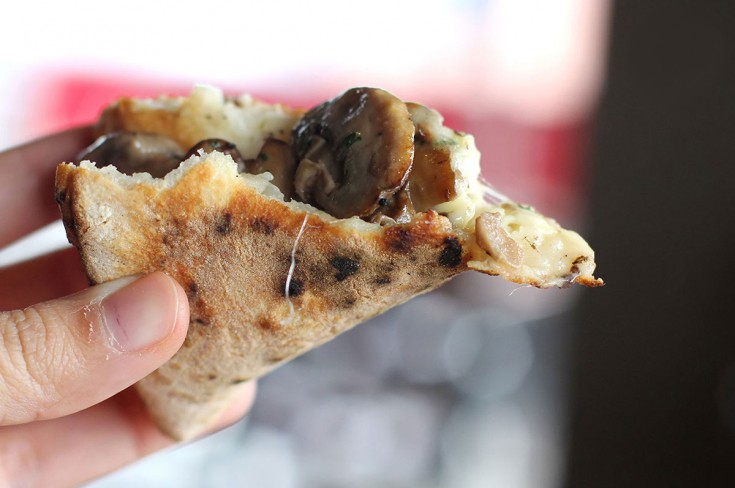
Welcome to the fold.
I'm talking, of course, about the most common way to hold a slice of pizza: thumb to crust, curving that cheesy slab of goodness into an edible vessel. (Other pizza eating techniques include the Travolta and the Inside-Out Fold.)
How far you take your fold is up to you, but we all seem to know instinctively that a firm curvature keeps pizza on its destined path from the paper plate to your face.
Turns out there's far more than basic human instinct and opposable thumbs to this equation -- and it is, literally, an equation.
In this case, it's the Theorema Egregium, which fittingly means excellent or remarkable theorem in Latin. We owe its discovery to the mathematical genius Carl Friedrich Gauss, and a hat tip to physics expert Aatish Bhatia for bringing it to our attention.
The theory, which allows for the mathematical calculation of an object's curve, is this: a flat surface can be curved in one direction or the other, but it must always retain some of its flatness. This is why it's so hard to gift-wrap a basketball without tearing or crinkling the paper, as Bhatia points out -- you're robbing the paper of some of its essential shape.
Pizza, as a flat object that's far more delicious than paper, plays by the same rules. When you hold it with one hand, it'll either be flat from top-to-bottom or from side-to-side. If you hold it but don't fold it it's flat from side-to-side and droops sadly. Folding it down the middle adds stiffness that makes the slice more eatable. This way you preserve the theorem while tapping into the physical strength of curvature (see: architect Eduardo Torroja's work; a Pringle; the corrugated cardboard your pizza box is made from).
Now that you know the power of the curve, hopefully you'll never take high school physics for granted again. To nerd out on this subject even more, see Aatish's piece in Wired. Happy slice folding!
Talia Ralph is a freelance writer pursuing her Master's in Food Systems at NYU. Follow her on Twitter @TaliaBethRalph.
Top photo: Flickr CC / a_b_normal123



